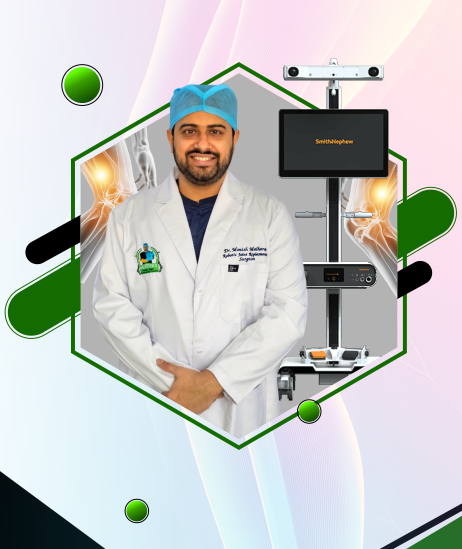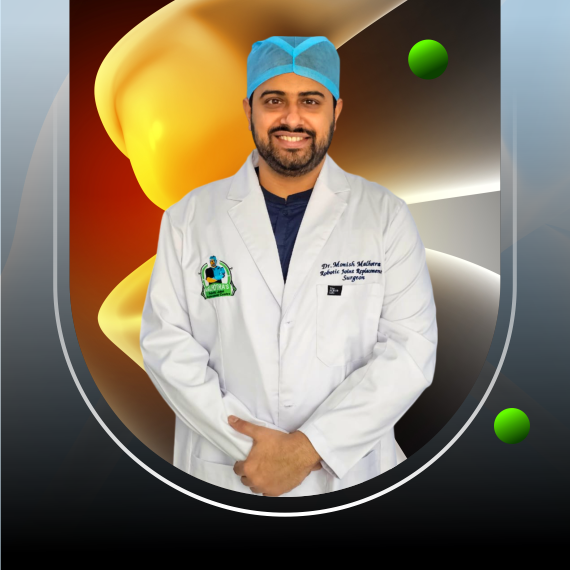1st Time in Rudrapur
Fully Active RoboticKnee Replacement
+91 80764 00450
Dept. of Robotics
The Medicity, Rudrapur (Uttarakhand)



I aim to deliver patient-specific treatment solutions for all types of hip and knee conditions,trauma and sports-related injuries. with over 500 hip and knee procedures performed every year and over 5 years’ experience in orthopaedic surgery, Mr. Malhotra is one of leading hip and knee experts.
I believe that fitness and exercise are vital to a modern healthy lifestyle. At the Malhotras Orthobotics, I treat patients with all different types of sports injuries, including complex reconstruction. My aim to restore your mobility so that you can get back to doing the things that you like doing the most.
DR.MONISH MALHOTRA

With robotic-assisted knee replacement surgery, the recovery time is shorter, and the procedure is more precise, which allows for a better outcome for the patient. The best way to prepare for surgery is to feel healthy, informed and prepared.
Robotic surgeries are generally minimally invasive, so there is less risk of pain, infection, and delayed healing afterward. Faster return to normal activities:
The advanced robotic technology usually results in very minimal scarring, improving aesthetics and preventing adhesions between internal body structures.
Robotic arms give surgeons better angles and greater flexibility to work through small surgical incisions, minimizing damage to surrounding healthy tissue.
The patient's natural anatomy is reproduced by precisely placing implants. As a result, tendons, ligaments, and muscles around the joint can function more Therefore, patients can recover quickly and resume their routine activities. activities.
Due to the small incisions and shorter recovery time, many patients experience significantly less pain after surgery.

The most common surgical knee intervention performed for osteoarthritis (OA) is a total knee replacement. During this procedure, the natural joint is removed and replaced with an artificial implant. This treatment option is usually offered to patients with advanced osteoarthritis of the knee. Total knee replacement may not always be optimal for patients with early to mid-stage OA in just one or two of the patellofemoral (top), medial (inner) or lateral (outer) compartments of the knee.